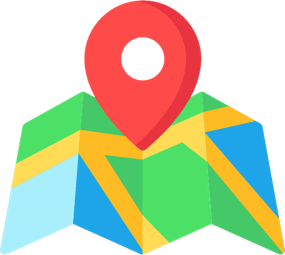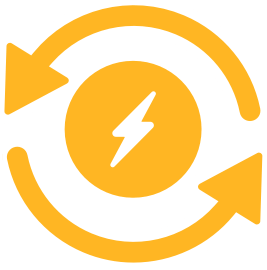|
Topic:
advanced html HELP ME!!!!!!!
|
|
|
sp1d3r:
I think you want to do something like a shout box, is that right? An HTML form like you have provides the user the ability to enter data, but you need a couple of other things to make this work: a processing script, a storage method (flat file or database), and a display script. Following are the basic steps that would be involved once everything is set up: 1. user enters name and message into form, clicks submit 2. form sends data to a processing script (using an "action" attribute in the form tag) 3. script validates data and stores the name and message in a database or flat file 4. script returns the user to the originating page 5. originating page makes a connection to the database or flat file and displays the contents You could also add an Ajax implementation so the update happens without reloading the page, but that's an extra development step. You would probably also want to have a way to purge older messages from the system if you are using it as a shout box. If you want an ongoing message board, then it would make no difference. Depending on who your host provider is, they may have some ready-to-go scripts for bulletin boards. It sounds like this process may be entirely new to you, so that might be a good first attempt. Later, you may want to try writing your own scripts. Many hosting companies provide users with access to scripting languages like Perl, PHP, ASP, etc., and some provide access to databases like MySQL or PostgreSQL. If you have PHP available (for example), but no database, you can save the contents of your message board to a flat file. The downside, however, is that the coding is a bit more elaborate to read and write to a flat file than it is to write to a more formal, structured database. PHP5 is packaged with a database called SQLite — which I've not yet had an opportunity to test — but that might be a simpler option for storing the message data. You can post further questions here, or you can send me a note via the mail feature on JSH if you prefer. |
|
|
|
|
|
Topic:
Buying A Mac
|
|
|
I'll agree with you, Wiltard, to a point.
As you stated, Macs are outstanding for anyone who does common computing — web, e-mail, instant messaging, video conferencing, music management, photo management, watching movies, use of office applications (word processing, spreadsheets, presentations, finance, etc.), graphic design & illustration, sound production/recording/editing, movie production & editing, 3D generation, web authoring/design/development, various networking tasks, and so forth. You are also correct that Macs have fewer gaming opportunities, not because the system itself is incapable of accommodating intensive gameplay but because game developers have an aversion to porting their titles to the Mac platform (which they consider to be a wise business move, though I'm not so sure — with Mac market share having reached somewhere over 7% by mid-2007 that would translate into a significant number of software units sold). Because Macs can run Windows in various ways — including natively via Boot Camp — and because many Mac models have sufficiently high-quality graphics cards, gaming is not a serious limitation for most Mac users. The point on which I disagree with you is that Macs are not good for other "nerdy" ventures. Because Macs have a full Unix core, computer users who consider themselves to be hardcore power users can perform pretty much any task they wish on any other *nix system. That gives Mac users (who are so inclined) much more control than Windows users have, though equal control to most Unix/Linux users, including the ability to build, install, configure, and tweak software packages for *nix systems (though perhaps requiring X11 or some other interface for such packages to be used effectively). Programmers for Windows would need to install Windows (probably a native install under Boot Camp) to do what they would need, but programmers for Mac, Unix, or Linux should be able to what they need pretty easily (though *nix programmers would probably need to install any OS versions for which they develop for effective development and testing, either through Boot Camp or a virtual machine like VMWare Fusion). |
|
|
|
|
|
Topic:
Buying A Mac
|
|
|
WarDriverJ:
You really should turn your firewall on, especially if you are connected to a network or a have a persistent internet connection — but it's a good practice regardless and rarely interferes with any networking requirements. (In fact, I don't think I've ever had any difficulty with any networking protocols or devices with my firewall enabled.) While it's true that Macs are more secure by default (as they don't broadcast their existence over a network or the internet), it doesn't make them completely immune from someone who knows you're out there already. It's just a bit of insurance against network-based attacks. Another good practice, unless you really need it, is to disable AppleTalk and any service you aren't using. chrish: You're right about the price of Apple's RAM. They charge a premium — and they are usually high-quality sticks — but it's pretty easy to change the RAM and save a few bucks. Because the installed 1GB is divided into two 512MB sticks, to bring the MacBook up to 2GB requires a purchase of two 1GB sticks ($66 at datamem.com) or to max out the new model to 4GB requires a purchase of two 2GB sticks ($144 at datamem.com). So, for the price of the Apple memory for 2GB, one can purchase twice as much memory from another source. I've purchased memory from Data Memory Systems (datamem.com) on a few occasions, and they have outstanding customer support if you happen to have a problem. (I only ever had one problem regarding a purchase, and it turned out that it wasn't the RAM but a problem with the computer into which I was installing the memory. Even so, they provided me with an RMA label and rushed delivery of a new RAM set at no charge.) bloodyrose: Even with your graphic design interests, I think you can get excellent performance with the MacBook — just expand the RAM to 2GB (or 4GB with the newest models, and since the new OS uses more system resources that may not be a bad idea). The casing is durable and many people prefer it to the brushed aluminum. (The plastic is high-quality but can warp slightly over time from the heat output, while the metal casing is more prone to denting and marring in general — but if you treat your machine with the care that any $1100 – $2800 piece of equipment deserves, you'll be fine either way.) Regarding software, pretty much anything you'll need you'll be able to find — from office suites to database systems to accounting software. As chrish pointed out, you can run Linux software (which is often ported to OS X, for the more popular software anyway). The only real drawback is in gaming, where developers remain reluctant to port their software to Mac OS X — despite that the hardware architecture is Intel-based now. There are several popular games for Mac, including World of Warcraft (and, no, I don't play), but if you're the sort of person who loves to keep on the cutting edge of gaming, you would likely need to run Windows on your Mac... excuse me, I nearly vomited a bit.  Mac OS X includes BootCamp, a component that allows you to install Windows (for which you'll need to purchase a licensed copy from Microsoft) and run it natively (without running it through a virtual machine). Doing so on the MacBook Pro would be the best likelihood of being able to play the newest 3D games with the best performance (thanks to the better video card and dedicated, greater memory). Just boot into Windows to play your game, then restart and boot into OS X to do everything else. (Since you generally cannot do anything else while playing a game anyway, there is no real inconvenience in restarting.) Mac OS X includes BootCamp, a component that allows you to install Windows (for which you'll need to purchase a licensed copy from Microsoft) and run it natively (without running it through a virtual machine). Doing so on the MacBook Pro would be the best likelihood of being able to play the newest 3D games with the best performance (thanks to the better video card and dedicated, greater memory). Just boot into Windows to play your game, then restart and boot into OS X to do everything else. (Since you generally cannot do anything else while playing a game anyway, there is no real inconvenience in restarting.)
|
|
|
|
|
|
Topic:
Buying A Mac
|
|
|
I compiled the following information from Apple.com. It is basic information to compare each of three models in each class (MacBook and MacBook Pro). Considering the considerable price difference, whether one purchases a MacBook or a MacBook Pro is an important decision.
If you meet one of the following criteria, strongly consider purchasing the MacBook Pro. 1. you're an avid gamer 2. you do a lot of video creation/editing (home movies, etc.) 3. you work in 3D graphics or art 4. you do a lot of presentations (or need to connect to external video devices frequently) 5. you are a professional graphic designer, video producer, etc. 6. you need a large screen to work effectively If you are a casual computer user (web browsing, e-mail, basic photo management, and word processing / spreadsheet work), however, the less expensive MacBook will likely meet all your needs sufficiently. One thing I strongly recommend with the less expensive MacBook is to pay the extra $150 to get an additional 1GB of RAM installed, bringing your total to the maximum 2GB. Your computer will run much more smoothly, and you will thank yourself in a couple of years that you didn't cheap out on the memory. * * * MacBook vs. MacBook Pro: Specs Overview Processor (Intel Core 2 Duo) MB: 2.0GHz / 2.16GHz / 2.16GHz MBP: 2.2GHz / 2.4Ghz / 2.4GHz L2 cache MB: 4MB shared (all models) MBP: 4MB shared (all models) System bus MB: 667MHz (all models) MBP: 667MHz (all models) Standard memory MB: 1GB (all models) MBP: 2GB (all models) Maximum memory MB: 2GB (all models) MBP: 2GB (all models) Hard drive MB: 80GB/120GB/160GB MBP: 120GB / 160GB / 160GB Slot-loading optical drive MB: Combo / SuperDrive / SuperDrive MBP: SuperDrive / SuperDrive / SuperDrive Graphics memory MB: 64MB shared / 64MB shared / 64MB shared MBP: 128MB dedicated / 256MB dedicated / 256MB dedicated Graphics card MB: Intel GMA 950 MBP: NVIDIA GeForce 8600M GT w/ dual-link DVI Screen type MB: Glossy TFT widescreen MBP: TFT widescreen (glossy optional) Screen dimensions MB: 13.3-inch / 13.3-inch / 13.3-inch MBP: 15.4-inch / 15.4-inch / 17-inch Resolution MB: 1280 x 800 / 1280 x 800 / 1280 x 800 MBP: 1440 x 900 / 1440 x 900 / 1680 x 1050 FireWire ports MB: One FireWire 400 (all models) MBP: One FireWire 400, One FireWire 800 (all models) USB ports MB: Two USB 2.0 / Two USB 2.0 / Two USB 2.0 MBP: Two USB 2.0 / Two USB 2.0 / Three USB 2.0 Audio output MB: Built-in stereo, minijack (all models) MBP: Built-in stereo, minijack (all models) Audio input MB: Omnidirectional microphone (all models) MBP: Omnidirectional microphone (all models) Video output MB: VGA (requires adapter), Composite and S-video (requires adapter) (all models) MBP: VGA, DVI, Dual display and video mirroring (adapters included) (all models) Video input MB: Built-in iSight camera (all models) MBP: Built-in iSight camera (all models) Networking MB: 10/100/1000Base-T Ethernet (all models) MBP: 10/100/1000Base-T Ethernet (all models) Wireless MB: AirPort Extreme, Bluetooth 2.0+EDR MBP: AirPort Extreme, Bluetooth 2.0+EDR Maximum battery charge life MB: 6 hours (all models) MBP: 6 hours / 6 hours / 5.75 hours Size (H x W x D) and weight MB: 1.08 x 12.78 x 8.92 inches, 5.1 pounds (all models) MBP: 1.0 x 14.1 x 9.6 inches, 5.4 pounds / 1.0 x 14.1 x 9.6 inches, 5.4 pounds / 1.0 x 15.4 x 10.4 inches, 6.8 pounds Casing: MB: white / white / black plastic MBP: brushed metal aluminum (all models) Software MB: Mac OS X v10.5, iLife, Front Row (I assume Photo Booth, too, but Apple doesn't specify) MBP: Mac OS X v10.5, iLife, Photo Booth, Front Row Base price MB: $1,099 / $1,299 / $1,499 MBP: $1,999 / $2,499 / $2,799 Price (adjusted for 2GB of RAM) MB: $1,249 / $1,449 / $1,649 MBP: $1,999 / $2,499 / $2,799 |
|
|
|
|
|
Well, it sounds delicious... just like you...

|
|
|
|
|
|
The hips are definitely where it's at! Hawaiigurl can work her hips, I'm sure...
I don't know what a lava flow is, Hawaiigurl, but I'm willing to find out. 
|
|
|
|
|
|
I'll have a tropical fruit drink, if you're serving...

|
|
|
|
|
|
I think this thread is for all of us who think Hawaiigurl is HOT!

There's just _something_ about a girl who can do the hula... |
|
|
|
|
|
Topic:
Vista "downgrade" to XP
|
|
|
Generally, after a new operating system is released and has been on the market for a short while, techies are excited about the improved ease of use, the wealth of new features, and enhanced performance, while the average desktop user has problems getting used to the newness of a system that isn't quite the same and might not support older peripherals and so forth. With Vista, however, even most techies are loathing the OS — and not just the drivers issues, but serious networking problems, inconsistency in identical setups, performance issues, overly restrictive security measures (that can be turned off, but then leave the system vulnerable). I think the growing pains for end-users are expected (and probably quite similar to the problems encountered in the early days of XP), including the driver and software support issues, but what's really telling is the aversion to Vista so many tech people have. In time, Microsoft will likely work out the bugs in Vista much the same way they did with XP, but it seems unfortunate that before Service Pack 2 is released, Microsoft treats their OS as a beta release. Give Vista a year or two more and it will likely be truly ready for consumer use. Until then, the suggestion I've heard most is to opt for the XP downgrade.
On a related note, Apple releases their new OS (OS X v. 10.5, code name Leopard) today. I'm a Mac person, but I'm not jumping on the bandwagon like so many others are. I figure it's best to give any major operating system at least a few months of real-world use by the early adopters so the serious bugs are revealed and addressed before the rest of us get into the game. That said, however, I do like the looks of Leopard — new features include "Spaces" (an enhanced version of the multiple workspaces available in most Linux GUIs), a new iChat with the ability to turn over control of your computer to someone else with that iChat (not to mention nicely enhanced video conferencing, including the ability to display slideshows, presentations, etc. while still engaging in the video conference), Apple Mail to let you easily connect to Yahoo Plus, Gmail, and other web-based e-mail services, Time Machine for easy and intuitive backup, and a "cover flow" view that allows you to flip through files and preview content quickly. There are lots of other enhancements as well, but these are some of the most notable. Leopard is a major upgrade, and according to Apple the upgrade installation typically takes an hour or two (but you don't have to sit and monitor it that entire time). I've done several installations and upgrades of Mac OS X, and it's always been a painless experience — so I have no reason to doubt that this time will be similar. Anyway, if anyone is interested in getting a Mac as an alternative to Windows (though it can run Windows also), you may want to wait a little while until the operating system has been in widespread use for a couple of months. |
|
|
|
|
|
Topic:
Where are all my peeps?
|
|
|
Mmm... I'll bet I'd love giving you a spanking, Hawaiigurl.

|
|
|
|
|
|
Topic:
Where are all my peeps?
|
|
|
"She's the thread rebel"
Is this true, Hawaiigurl? Do you need a spanking? 
|
|
|
|
|
|
Topic:
Where are all my peeps?
|
|
|
Bay broke the page... always pushing the limits and boundaries... rebel!

|
|
|
|
|
|
Topic:
Where are all my peeps?
|
|
|
itsnottoohardtoreadpostswithoutspacesorpunctuationbutitseasierifpeopleatleastuseafewspaces
|
|
|
|
|
|
Topic:
Where are all my peeps?
|
|
|
Yo!

|
|
|
|
|
|
Topic:
In my pants game
|
|
|
Crazy *****... in my pants.
(someone probably already said it, but...) |
|
|
|
|
|
snapshots -> homegrown porn
|
|
|
|
|
|
Topic:
Word Replcement Game #5
|
|
|
straightened -> hair

|
|
|
|
|
|
Topic:
Word Replcement Game #5
|
|
|
brushed -> hair
|
|
|
|
|
|
Topic:
Word Replcement Game #5
|
|
|
velvet -> suede
|
|
|
|
|
|
Topic:
Word Replcement Game #5
|
|
|
touch -> supple
|
|
|
|
|






